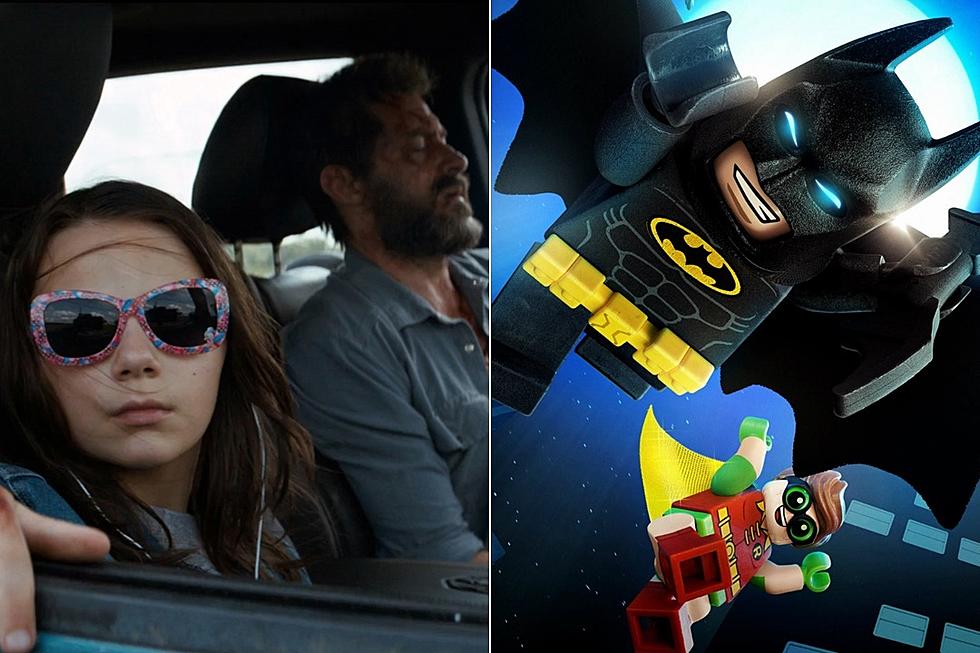
Jiro Kuwata’s ‘Batmanga’ Is A Superhero Comic Unlike Any You Have Seen
Readers demand a lot from superhero comics: consistency, continuity, adherence to the rules of the universe, compelling heroes, magnetic villains, satisfying endings, and the list goes on.
But those of us who have been reading for years (if not decades) are chiefly looking for one big thing above all else: novelty. We want to see something we’ve never seen before; characters we recognize as the heroes and villains we love being put into scenarios and settings wholly unlike what’s come in nearly 80 years of superhero comics.
That’s notoriously hard to do. Many times, stories end up being very similar to what’s come before, and when creators do try something new, they elicit complaints from readers who don’t like particular changes or decisions. But what if you could strip away those pressures and build a superhero comic that’s so strange and unique that it’s a must-read?
That’s what Jiro Kuwata’s 1960s Batman comics, currently being republished as the DC Digital Series Batman: The Jiro Kuwata Batmanga, are. A strange combination of classic Batman comics, the 1960s Batman TV-show, Marvel-Age science-based storytelling, mysticism, cartoon physics, Tokusatsu, and of all things, Scooby-Doo, it isn’t like any comic I’ve ever read. It’s endlessly surprising, and I love it.
Here’s what makes it so special:
The Villains
Batmanga doesn’t use the traditional Batman rogues gallery, and is all the better for it.
Instead of thieves and psychopaths with colorful gimmicks, the bad guys in Bat-Manga fall into two categories: the intelligent super-being and the magnificent huckster. In the six complete stories published so far, three of the bad guys fall into the latter category: Lord Death Man (who you may remember appearing in Batman Incorporated back in 2010), Doctor Faceless, and Go-Go the Magician. They all have plans that appear to be one thing, but turn out to be something else entirely. For example, Lord Death Man has a trick of making people think he has died and come back to life, when in fact, he’s just doing a yoga technique to slow his breathing.
That’s the really nutty part about the hucksters, though: They pretend to do extraordinary or supernatural things, but as it turns out they simply do extraordinary things that are somehow different. This isn’t Scooby-Doo where a regular guy fools some kids with lights and smoke. This is a scenario where it turns out someone claiming to be a magician turns out to have stolen a weather manipulation device. It’s flat-out bananas.
Two of the bad guys in the stories published so far are intelligent super-beings: the mutant governor and Professor Gorilla (a.k.a. Karmak). Both stories are unlike any modern Batman story I can recall: The former is about Batman and Robin challenging a character with the appearance and power of a Dragonball Z villain. Even crazier: He’s the governor, who discovered a latent mutant gene within his body. This crazy Cell-looking guy is the next natural step in human evolution. The other villain is a gorilla who has been imbued with the intellect of a scientist, and decides his first act is to make and put on a bulletproof cape. I am not making this up.
The odd man out is the villain from the third, and weakest, story published so far: The Human Ball. He’s just a guy in a bouncy costume, and is thus the most like your run-of-the-mill, forgettable supervillain. Compared to Professor Gorilla and Doctor Faceless, he can’t win.
The Art
Kuwata’s art is a mesmerizing mishmash of styles. There’s a clear, classic manga look to it—his Commissioner Gordon (called “Inspector Gordon” or “Chief Gordon” here, in some interchangeable translation) looks like he could have come out of an Osamu Tezuka comic, as does his depiction of himself in a frame story. Bruce Wayne has a sort of Lupin-ish look to him. But there are also some interesting nods to American comics, namely the way Batman and Robin look when they’re in costume. Or perhaps the nod is toward the Batman TV series, since the Batmobile is clearly the same one from the show.
And then there’s the almost horror-comics spin on things. Doctor Faceless isn’t a stylized depiction of a man with scars; he’s a pretty terrifying mangled guy. Lord Death Man has a distinctively creepy look to him.
On top of that, there a dynamism and kineticism to the art that makes it enthralling. It’s such a melting pot of styles and influences.
Batman Himself
This is not the Batman you know. He doesn’t brood, but he’s not exactly Adam West Batman either. He doesn’t even really resemble the Golden Age Batman. This is a hero with a clear moral compass—he feels compassion toward innocents and the villains he believes are victims of circumstance—and he does that Batman thing where he defeats his enemies, particularly the overpowered ones, with brains and finesse.
He’s also someone, however, that will apparently allow a marauding, hyper-intelligent ape to wreak havoc on Gotham City for several days before attempting to take the beast down (his explanation is that he had to wait for Professor Gorilla to get weaker). He’ll also agree (after some prodding) to take control of a death laser and fire it at the mutating governor in case something goes wrong in the process of him becoming a superhuman mutant (it does not have the intended effect). He's not the infallible workhorse we know. In one story, he’s grievously injured and almost dies. In another, he goes on an impromptu vacation to forget about a bad guy.
And he’ll kill a villain if he has to. Kuwata sets up the story so that there’s no other choice, of course, but that is, obviously, the writer’s decision. And in that decision, Kuwata’s Batman comes out looking very different than he does in American comics.
The Science
Outside of the Marvel comics of the 1960s, I don’t know if I’ve ever read any superhero series that so prominently features scientists. There’s at least one in every story here, and it’s often the case that an experiment gone awry or being stolen is the catalyst for the villainy that takes place in a given story.
There are a few key differences between these stories and the Marvel Age stuff, though: First, the scientists are never the bad guys (though it one case, that seems to be so). Second, the experiments aren’t couched in a semi-objective reality where fantastical things can be attributed to scientific phenomena (namely, radiation). These are stories where scientists simply develop devices that can control weather or that give people the abilities of animals, and you’ve just got to accept that. For Kuwata, science isn’t all that different from magic. It’s a means to a story end, and it lends itself to some beautifully nutty stories.
The Story Structure
With the exception of the four-part governor mutant story, all of the stories so far have been packaged into three-part tales. In what may be another nod to the Batman TV show, nearly chapter ends in a cliffhanger. Batman may find himself stuck in a block of ice or preparing to have his brain stolen.
As such the typical three-act structure kind of goes out the window; both acts one and two end with Batman and Robin in dire peril. As such, Batman finds himself up against the odds most of the time. Often, he doesn’t come up with the right solution to his dilemma until the final few pages of the story. In that sense, these stories are markedly different from Batman stories, particularly modern Batman stories, that readers find familiar. In those, Batman has everything figured out from page one, panel one. Sometimes before that. Here, he’s grasping at straws, guessing his way through, and occasionally totally outmatched.
More From ComicsAlliance









